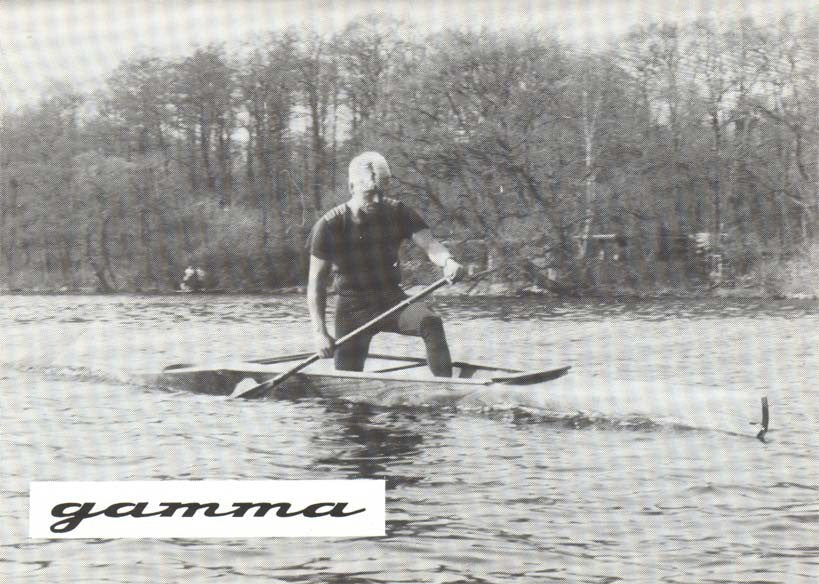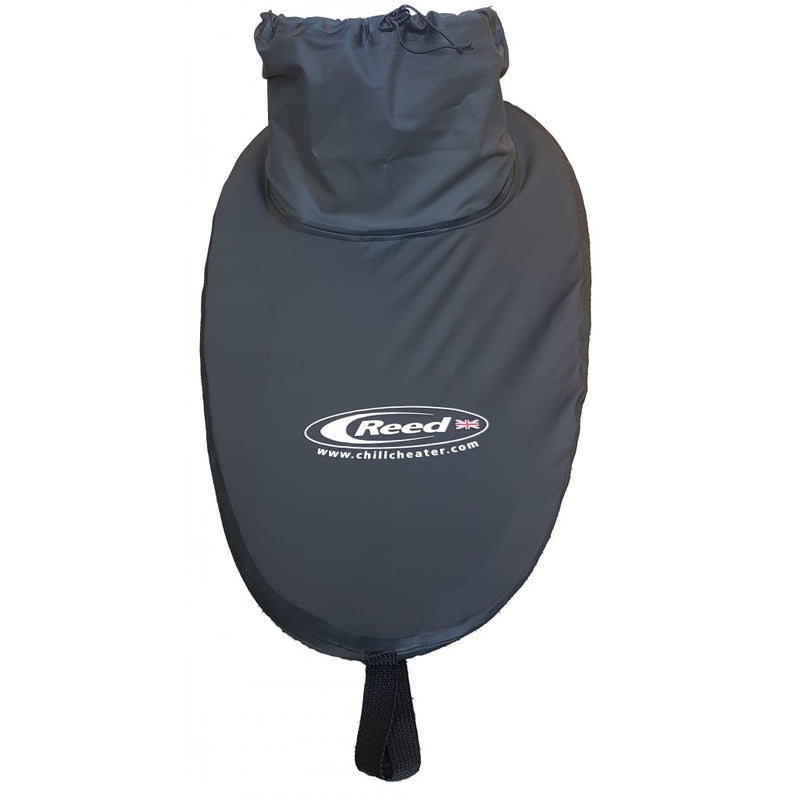27 years of experience with “DELTA” proves that this is a boat with good qualities, which Jørgen Samson naturally has preserved in a new design. “GAMMA” has the same carrying capacity and the same freedom for movement, whilst the stability is considerable better than in the “DELTA”. Comparisons can be seen in the following text.
The difference is obvious when the canoes float on the water. “GAMMA” hardly has any bulge at its widest point. It is actually 4 cm lower here and that’s a lot, and it will be noticed especially in side-winds. The influence from the wind not only depends on the wind force, but also on the speed of the boat (for instance at 500 m). The wind direction matters as well. Therefore is it necessary to adjust the trim, in relation to the actual circumstances, to minimize the necessity of steering. In “GAMMA” (which is side wind neutral) only very small trim adjustments are necessary, and therefore it won’t affect the speed.
The effort of keeping the canoe dry in rough weather can also be seen in the shape of the deck. The fore-deck is steeper, which leads the water faster out towards the gunwale. The cockpit is protected behind a wave-guard which leads the water outwards and downwards. It leaves the screen below the gunwale, and therefore the splash doesn’t blow into the canoe. The aft deck makes the best possible use of the allowable 75 cm by means of a strong curved windscreen. On the top it takes the shape of a crest, which resists waves coming from astern.
The bottom of the hull of “GAMMA” is wedge shaped, and the lines give a convincing impression of speed. Amidships the width in the water line and the cross section is the same as it is with “DELTA”; but the outwards inclined freeboard on “GAMMA”, is continued all the way past the wave-guard; another example of the effort to improve the seaworthiness.
The fore-body is changed a little to reduce the bow wave effect, whilst the stern has been made deeper. At the same time it is also sharper by the keel. This means that it is easier for the canoe to maintain a straight course, but it still retains the ability to turn without too much loss of speed. These two demands are always opposing. It used to be fulfilled in early kayak construction by the mounting of a fin, at least until 1946, but since it isn’t allowed on canoes, the bottom of “GAMMA” is made especially deep and has a sharp V-shape at the spot where the fin – nowadays replaced by a rudder – is placed on the kayaks. Behind that the rocker rapidly turns up to the rounded profile of the stern, which makes it possible to turn around close to the buoy in a 10,000 metre race.
The water resistance has to be reduced by 1 – 1,5 % to make the paddler feel an increase of speed.
“GAMMA” reaches that goal in the same way as our new kayaks, since the wet surface has been reduced. The wave making has also been reduced both at the bow and at the stern, and the deep dip between the waves is clearly more flat when using the “GAMMA”.
It is obvious that the improved construction has to be maintained exactly in the complete canoe. Boats made of artificial material are failing on this subject, because the material is shrinking when it is toughening up during the hardening process. It is shrinking the most at amidships where the surface area is greatest, and when the mould also is made of artificial material the effect is doubled. The result of this is a change to the shape of the canoe, and especially in the rocker, which has a significant influence on the qualities of steering and speed.
Kayaks and canoes are build of wood into shape, and are tightly controlled by the constructor, to make sure that they match his drawings exactly. The shape will not change after that, it still fits precisely into our mould, even when we repair 40 year old boats. They keep the rocker and don’t get deformed in the heat of the sun, or during transport.
The bottom is tent towards pressure from the outside, which also benefit the speed.
Designer: Jørgen Samson











